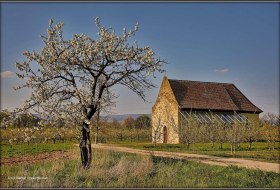
searchMenu


The carnival museum, which was newly opened in 2004, presents 160 years of Mainz carnival history. From fool's hats, medals, guards uniforms, and costumes to song books, programs, and historical image and sound documents to excerpts from the famous television sessions “Mainz, how it sings and laughs”, the exhibition offers a lively part of Mainz's history and culture. The exhibits document the Carnival from its beginnings in 1837 until today. The political-literary tradition dates back to the Vormärz (pre-March) period when…

The Mainzer Kammerspiele at Malakoff Passage is a privately owned theatre established by freelance actors in 1986. It specialises in modern plays. Every season, there are more than 200 performances, including on average seven opening nights of own productions. At the moment, nine companies work at the Mainzer Kammerspiele, performing traditional and experimental plays, contemporary ballet, and topical revues, as well as musicals for children. The theatre is particularly proud of its performances of works by contemporary authors, premieres,…

An diesem Aussichtspunkt mit Ruhebank hat man einen herrlichen Blick über den Rheingau bis zum Binger Loch.

The culturally and historically significant St. George's Chapel from the 10th century is located on the ground of a villa rustica that was built in 40 AD. Once an important pilgrimage site on the Roman Route Rheinhessen, St. George's Chapel is now only accessible during guided tours or events.

The Oriental Heisje Here you see a squat Tonnendachhäuschen, which was also commissioned in 1766 by Unterfauth Hirschel. It consists of three walls, the door opening points south. The door frame is a special feature because it gives the shape of an onion dome. Height: 185 District: "Auf dem Staatsbühl" Flurnamen: 1382: off Stahelbohel 1399: to stahelbuhel 1400: uff dm Stahelsbuhel 1600: on the Staßbühel 1681: visit the Staasbühel 1934: On the Staasbühl 1954: On the…

The south-eastern wall tower of the Flörsheim-Dalsheim Fleckenmauer is the simplest wall tower.


The Arch of Dativius Victor is one of the most important reconstructed Roman monuments in Germany. The original arch is now on display at the Mainz State Museum and the structure on Ernst-Ludwig-Platz is a replica. The 43 cut stones were discovered during construction work at the turn of the 20th century. Archaeologists believe that there were originally 75 such blocks, meaning that only about a third of the arch has survived. It appears that some of the stones were already "recycled" during the Roman times for the…